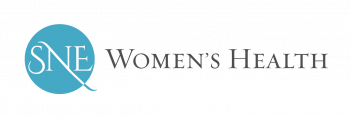Genetic Screening Early Pregnancy in Southern New England
Patient Options
There are several non-invasive options for pregnant women interested in determining the risk of certain birth defects. Each option offers advantages and slightly different success and false-positive rates.
This option consists of a nuchal translucency (NT) ultrasound plus two blood tests, pregnancy-associated plasma protein A (PAPP-A) and beta human chorionic gonadotropin (HCG). Optimal timing for this test is 11 – 12 weeks gestation, when the test will detect about 87 percent of fetuses with Down syndrome. (The false-positive rate is 5 percent). The test can be performed up to 13 weeks; however, the detection rate drops to 82 percent. These results are available quickly and this option offers the earliest results. There is not maternal or fetal risk with this option. In 10 percent of women, the NT measurement cannot be performed successfully due to the position or movement of the fetus.
This is a maternal test consisting of four different substances. The blood cannot be obtained until 15 weeks gestation. The test has a 65 percent to 81 percent detection rate with a 5 to 8.5 percent false positive rate. The results are available in a few days. This option has been the primary test used in clinical practice until recently. One of the four substances in the quad screen is called alpha fetoprotein or AFP. This can be used alone to assess the risk of an open neural tube defect (ONTD), such as spina bifida.
The sequential screen test takes advantage of both of the first trimester (option 1) and second trimester i.e., quad screening (option 2) to evaluate your risk for Trisomy 21 (Down syndrome), Trisomy 18 and open neural tube defects (ONTD). This test will detect 90 percent of fetuses with Down syndrome, 90 percent of fetuses with Trisomy 18 and 80 percent of fetuses with ONTD. The first trimester part of this test will identify the majority of the high-risk patients with either Trisomy 21 or Trisomy 18. The false positive rate is low (about 1.2 percent). The second part of this test (quad screen) increases the detection rate, keeps the false positive rate low, and gives a risk assessment for ONTD. Again, there is no risk to your or the fetus. The sequential screening results will be given to you and your provider a few days after each part of the test.
This option is used when NT is not possible or unsuccessful and includes only maternal blood testing from both the first and second trimester test. The results are available after second trimester screening at 15 – 16 weeks. The detection rate is 87 – 90 percent, with a false-positive rate of 5 percent.
A detailed examination of the fetal anatomy is usually performed between 17 and 20 weeks gestation. There is no risk to the mother or fetus. The detection rate with a skilled sonographer and doctor might be only 50 percent. This option is always offered in conjunction with the previously mentioned options.
Take a Look at Our Providers
We are committed to our patient’s well-being and will conduct business with integrity, respect and compassion. Let us meet your health care needs.
